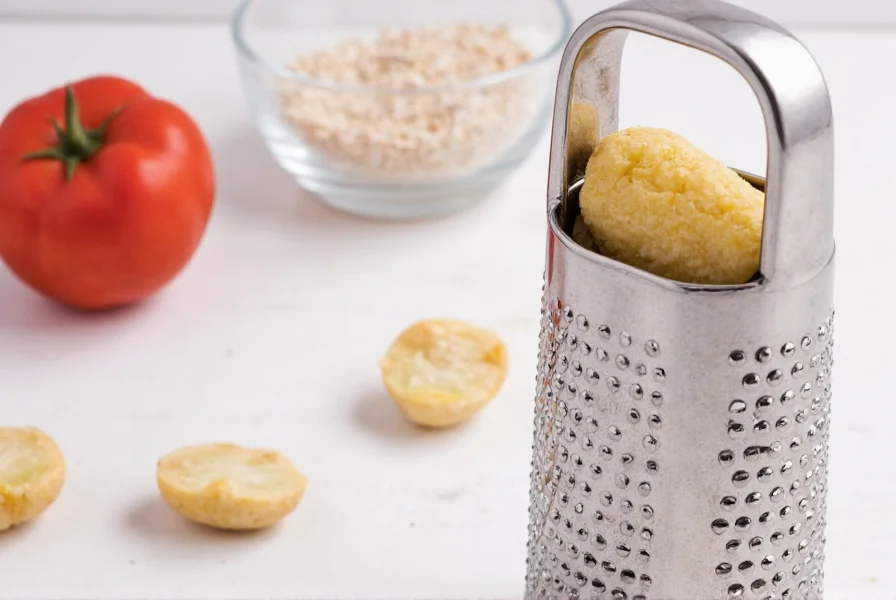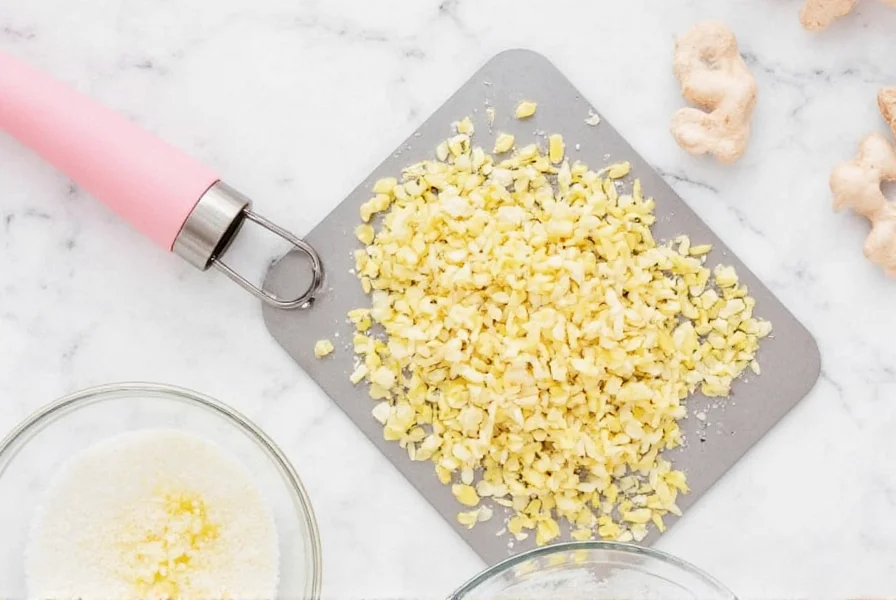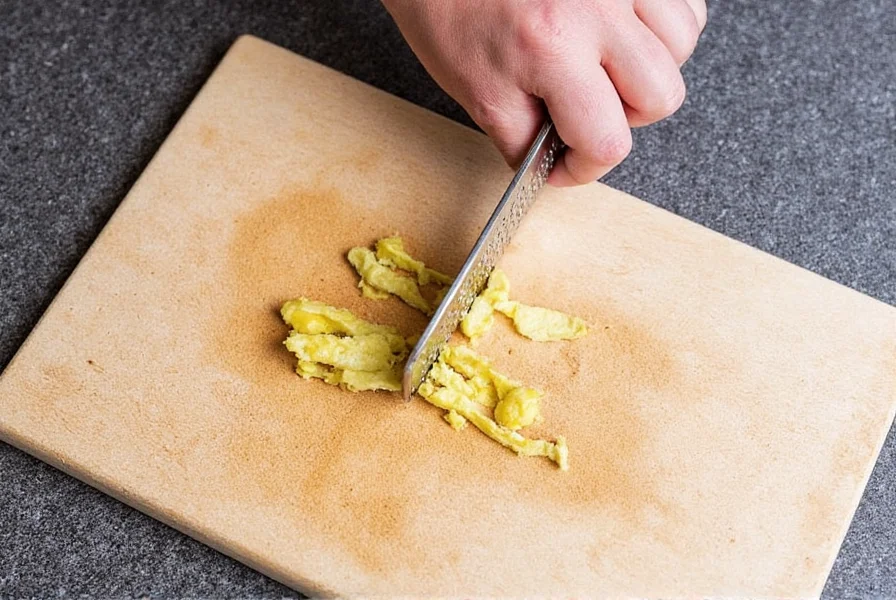Why Standard Graters Fail with Ginger
Regular box graters struggle with ginger's unique fibrous structure. The coarse holes create stringy, uneven shreds that separate from the essential oils and juices, wasting up to 40% of the valuable root. Ginger's tough fibers catch on standard grater surfaces, requiring excessive force that leads to inconsistent results and potential injury.
Types of Specialized Ginger Graters
Understanding the different grater designs helps identify which tool best serves your kitchen needs. Each type offers distinct advantages depending on your cooking frequency and preferred techniques.
| Type | Best For | Yield Efficiency | Cleaning Difficulty |
|---|---|---|---|
| Ceramic Microplane | Regular home cooking | 95% | Easy |
| Stainless Steel Rotary | Commercial kitchens | 98% | Moderate |
| Silicone Mat Graters | Occasional use | 85% | Very Easy |
| Traditional Japanese Oroshigane | Authentic Asian cuisine | 92% | Moderate |
Selecting Your Ideal Ginger Grater
When choosing the best ginger grater for home cooking, consider these critical factors:
Material Matters
High-carbon stainless steel provides the sharpest, longest-lasting blades but requires proper drying to prevent rust. Ceramic options maintain sharpness longer and resist odor absorption but can chip if mishandled. The most durable professional ginger graters combine stainless steel blades with ergonomic, non-slip handles.
Size and Ergonomics
For frequent users, select a grater with a comfortable handle that positions your hand safely away from the blades. Compact models work well for occasional use, while larger surfaces benefit those preparing ginger in bulk. The optimal size balances efficiency with storage convenience in typical home kitchens.

Mastering Ginger Preparation Technique
Proper technique significantly impacts your results regardless of which ginger grater you choose:
- Peel minimally - Remove only damaged skin sections; many graters work effectively through thin skin
- Chill the root - Refrigerate ginger for 20 minutes before grating for firmer texture
- Use downward motion - Apply gentle, consistent pressure in one direction
- Rotate the root - Turn ginger periodically to access all surfaces evenly
- Capture all pulp - Use the grater's collection container or place over your recipe
Maintenance for Longevity
Extend your ginger grater's lifespan with these care practices:
- Clean immediately after use with a dedicated brush to prevent fiber buildup
- Avoid dishwashers for most models as high heat and detergents degrade blade sharpness
- Store in a dry location with blade protection to maintain edge integrity
- Remove stubborn fibers with a soft toothbrush and mild soap solution
Creative Applications Beyond Ginger
Your specialized ginger grater excels with other challenging ingredients:
- Galangal and turmeric roots for authentic Southeast Asian dishes
- Fresh garlic and horseradish without harsh aftertaste
- Hard cheeses like nutmeg or dried citrus zest
- Creating fine spice pastes for marinades and dressings

Common Ginger Grating Mistakes
Avoid these frequent errors that compromise your results:
- Using excessive force that damages blade edges
- Grating in multiple directions causing fiber separation
- Allowing ginger to dry out before preparation
- Using dull or inappropriate tools that waste valuable root
- Improper storage leading to rust or dulling of blades
Maximizing Ginger Yield
Professional chefs achieve nearly zero waste through these methods:
After initial grating, wrap remaining ginger pieces in a damp paper towel and refrigerate for up to three days. Re-grate these pieces when needed, as the fibers rehydrate slightly. Collect all ginger pulp and juice in your recipe bowl—every drop contains valuable flavor compounds often lost with standard preparation methods.
Frequently Asked Questions
Can I use a regular cheese grater for ginger?
While possible, standard cheese graters produce stringy, inconsistent ginger shreds with significant waste. The coarse holes separate fibers from essential oils, yielding only 60-70% of usable ginger compared to 95% with specialized graters designed for ginger's fibrous texture.
How do I prevent ginger fibers from clogging my grater?
Chill ginger for 20 minutes before grating to firm the fibers. Use gentle, consistent downward pressure in one direction only. Clean the grater periodically during use with a soft brush. For stubborn clogs, soak briefly in warm water with mild dish soap before brushing clean.
What's the difference between a microplane and ceramic ginger grater?
Microplane graters feature laser-cut stainless steel blades that create ultra-fine ginger paste but may develop rust without proper care. Ceramic graters maintain sharpness longer, resist odors, and won't rust, but are more fragile. Both produce superior results compared to standard graters, with ceramic offering better longevity for occasional users.
How should I store freshly grated ginger?
Store grated ginger in an airtight container with a small piece of parchment paper to absorb moisture. Refrigerate for up to 5 days. For longer storage, freeze grated ginger in ice cube trays with a bit of water or oil, then transfer to freezer bags. Properly stored, frozen ginger maintains quality for 3-4 months.
Why does my ginger grater produce watery pulp?
Watery pulp typically indicates you're using excessive force or a grater with holes too large for ginger's fibers. Specialized ginger graters have finer blades that capture pulp without separating the liquid. Chill ginger before grating and use gentle, consistent pressure for optimal texture. The finest graters produce a thick paste rather than watery shreds.











 浙公网安备
33010002000092号
浙公网安备
33010002000092号 浙B2-20120091-4
浙B2-20120091-4